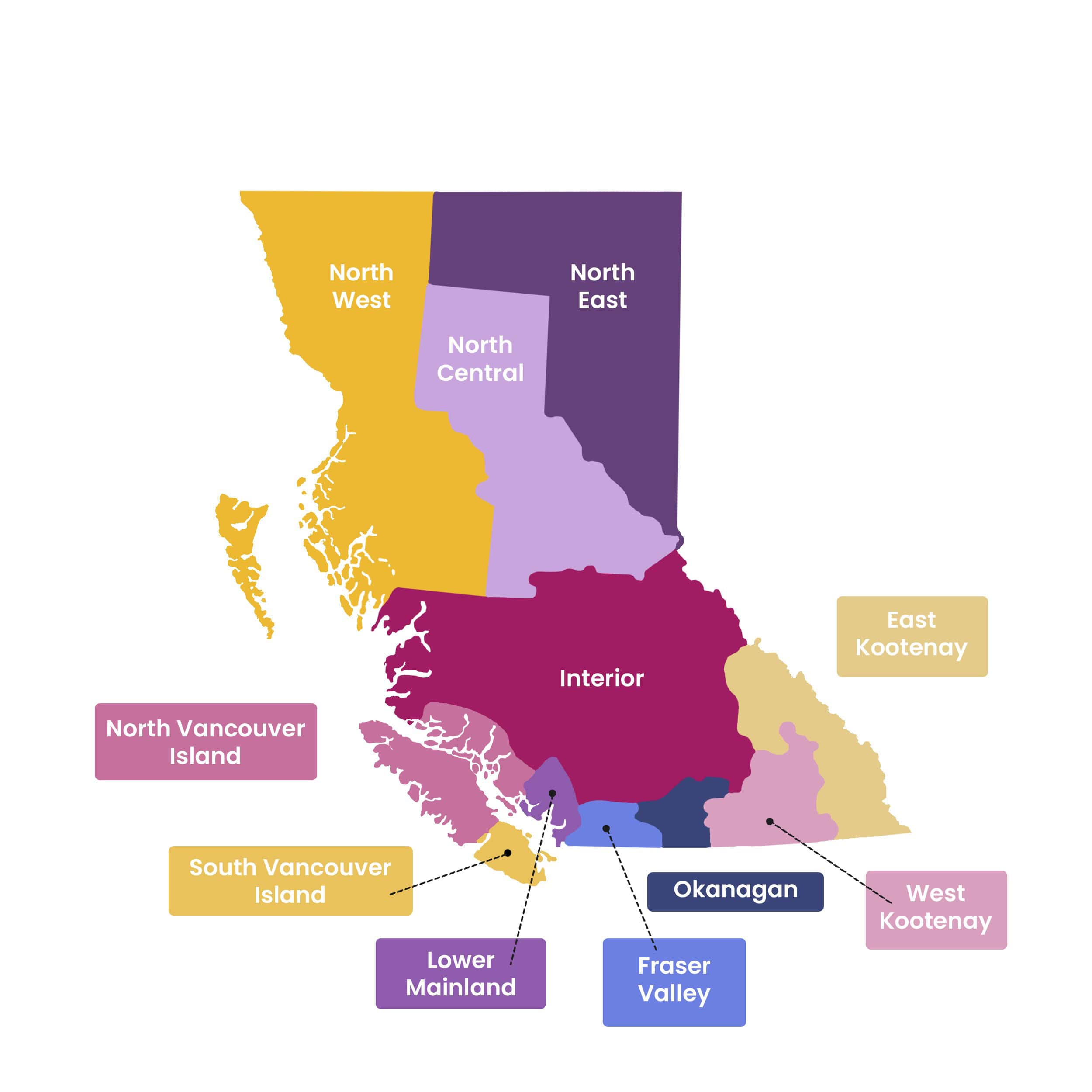Weather Emergencies and
Gender-Based Violence
Information and resources for anti-violence workers, survivors, and communities
What will you find on this page?
How to stay informed?
Weather emergencies have more severe impacts on communities that navigate multiple barriers to accessing supports and resources, such as rural, remote, and northern communities. Survivors and anti-violence workers, especially in these communities, often navigate complex and challenging issues with limited support and resources. Weather emergencies further compound the impacts of gender-based violence and put survivors in a more unsafe situation.
EVA BC is paying close attention to weather emergencies which may impact member programs located near the identified regions across BC. This page is meant to host resources for communities and anti-violence workers as they prepare for the possibility of weather emergencies. EVA BC continues to engage in discussions with MPSSG about how to better equip anti-violence programs to navigate weather emergencies.
In the meantime, if you are an EVA BC member, please do not hesitate to reach out to programsupport@endingviolence.org if you have any questions, or if you have any more resources you would like us to include on this page.
Stay informed of current and official information for weather emergencies in BC.
Review regional data and comparisons with 2024 season.
This map provides the latest air quality data based on the Air Quality Health Index. Data is refreshed every 60 minutes.
The BC Wildfire Service provides current wildfire information, helping you stay informed about wildfires and wildfire-related events and conditions across BC. It is not intended to be used as a risk assessment tool for insurance purposes.
Guidance during emergencies including Métis specific resources.
How to prepare for an emergency?
A webinar by Canadian Red Cross.
The probability of damaging wildfires has increased in recent years, due in part to the effects of climate change. If you live in a risk area, it’s important that you take time to get ready. The guide will help you prepare your home, protect your property and understand what to do if a wildfire is close to your community.
BC Society of Transition Houses has developed this online toolkit to walk organizations through the 8-stage process of developing an Emergency Management & Service Continuity (EMSC) Program. It provides step-by-step instructions on how to complete the various templates and tools required to identify organizational vulnerabilities and service continuity strategies to develop a fulsome EMSC Program. It also supports the development of a culture of readiness within an organization when responding to adverse risk events that could impact operations, services, staff and program participants.
How to navigate the impact of an emergency?
The Canadian Red Cross (CRC) is distributing free N95 masks to organizations located in communities at risk of exposure to wildfire smoke that may impact air quality.
People impacted by an emergency can use this information to help in their recovery once the danger has passed. Including: Interim needs and financial supports, health resources, steps to recovery, and resources for businesses and industries.
Made available by the BC government for individuals, small businesses, farms, and charitable organizations who are impacted by disasters.
YWCA’s NESS Fund provides one-time financial support of up to $2,000 to survivors of gender-based violence to help them leave abusive living conditions, emergency shelters, or precarious living situations.

